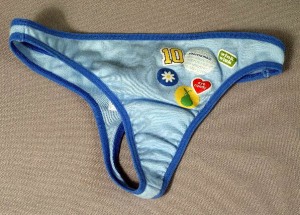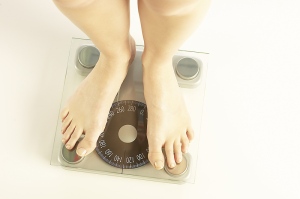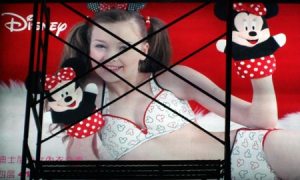
Girls Feel Anxiety about Pressure to Fast-Track Their Development
Dr. Robyn J.A. Silverman
Between the magazine articles telling girls to lose weight, glossies teller her that she’ll never measure up , young celebrities withering away along with their clothes, models getting thinner and thinner, and the massive pressures in school and among friends to look the best, a generation of girls are being affected. Poor body image, poor body esteem, mental health issues, and low self worth abound.



Negative messages are everywhere. Even our daughter’s clothes and favorite dolls and toys are getting a boost, a lift, a pout, and a “push” to grow up sooner and sexier than ever before. Some, you just have to wonder, are the retailers kidding?

So who could be surprised that girls are showing some wear and tear from today’s sexualized, body-bashing culture? A recent study out of the UK reveals that the pressure to grow up too soon is one the greatest influences on girls’ well being, according to the girls themselves! The pressure to wear clothes that make them look older, entertain sexual advances from boys, lose weight according to the directions in the media, and even consider plastic surgery to “improve looks” were identified as pressures that were particularly damaging.
One participant explained: “When I was eleven I read a teenage magazine for the first time and that is when it kind of clicked, ‘I should be like this.’”
Here’s the scoop:

Who was studied? Girls between the ages of 10 and 14 years old. Qualitative (descriptive) information was collected through focus groups consisting of 54 girls, divided by age. Quantitative (the numbers and percents) data were collected through polls online, in which 350 girls participated.
By Whom: Girlguiding UK, the Mental Health Foundation, and leading researchers Opinion Leader.
What was studied? The report considers a new generation of potential triggers for mental health problems in girls – premature sexualization, commercialization and alcohol misuse – and also some of the more longstanding issues like bullying and family breakdown. It examines the impact of such factors on girls’ feelings and behavior at home and in their communities, and asks young women themselves what might be done to help.
What did they find?
§ Mental Health Issues: Many girls reported that they had direct experience with friends and people who they knew who were suffering from some kind of mental health problem.
o Two-fifths know someone who has self-harmed
o One third of the girls have a friend who has suffered from an eating disorder
o Half new girls who were suffering from depression
o Almost two in five had friends who had experienced panic attacks.
o Many girls felt strongly that self-harm was within the spectrum of normal teenage behavior – as long as it happened infrequently– and was not necessarily an indication of a mental health issue.
o A sixth of those surveyed often feel angry
o Half admit they find anger hard to manage.
o Around a quarter often worry (28%) and feel like no-one understands them (25%) while around half find both emotions hard to handle.
§ Gotta Have It! Increased pressure to have money for the latest electronics and clothes means pressure for the girls.
o One-in-five girls report feeling anger and sadness
o A quarter of the girls feel worried or bad about themselves.
§ Fodder for Bullies? Girls felt that the growing check-list of “ideals” for young girls was giving bullies additional excuses to single them out – leading to stress, unhappiness and anxiety.
As one girl admitted: “If I get bored then I start becoming really aggressive.”
§ Is my body OK? Media is a major culprit.
o Looking at pictures of models, pop-stars and actresses makes a fifth feel sad, two-fifths feel bad about themselves and 12 per cent feel angry.
o Media stories that portray young people in a bad light make half the girls who took part angry (50 per cent), a quarter worried (23 per cent) and almost two-fifths sad.
· Read the full study: A Generation Under Stress
Study after study is showing that girls are under stress…and duress in their normal, everyday lives. Yet, our culture continues to churn out manufactured, thinned-out celebrities, sexualized play-things, inappropriate clothes, and media to deliver the 1-2 punch.
Now, more than ever, it’s vital that we provide our girls with positive role models, positive body messages, and positive activities and powerful environments that show them they are so much more than a 2-dimensional object there to be critiqued, criticized, and put-down.
What are your thoughts on this recent study? Any ideas with regard to what to do next? Yes, we need these girls to have a pivotal moment when they know they’re worthwhile—but even more than that—we need to promote positive development in these girls from the start so that this problem is markedly reduced in the first place. Otherwise, we are simply averting our eyes…aren’t we? I mean, how bad does it have to get before we pay attention?
Here’s to Making Our Girls Feel and Become Powerful–

Filed under: Body Image, Body Image Press, Body Image Research | Tagged: Body Image, Dr. Robyn Silverman, Girls, media, self worth, Sexualization, Teens | 9 Comments »


















 They’re also wary of changing their brand too much or sending out items that parents don’t like as Mattel did in 1993 when they spruced up the classic Ken doll with a poorly chosen purple mesh T-shirt, leather vest, earring, and high-lighted coif. Warner Brothers made a similar marketing mistake when they revamped Bugs Bunny and Daffy Duck in 2005, full with mohawks and crazy eyes in the series “Lunatics.”
They’re also wary of changing their brand too much or sending out items that parents don’t like as Mattel did in 1993 when they spruced up the classic Ken doll with a poorly chosen purple mesh T-shirt, leather vest, earring, and high-lighted coif. Warner Brothers made a similar marketing mistake when they revamped Bugs Bunny and Daffy Duck in 2005, full with mohawks and crazy eyes in the series “Lunatics.”

